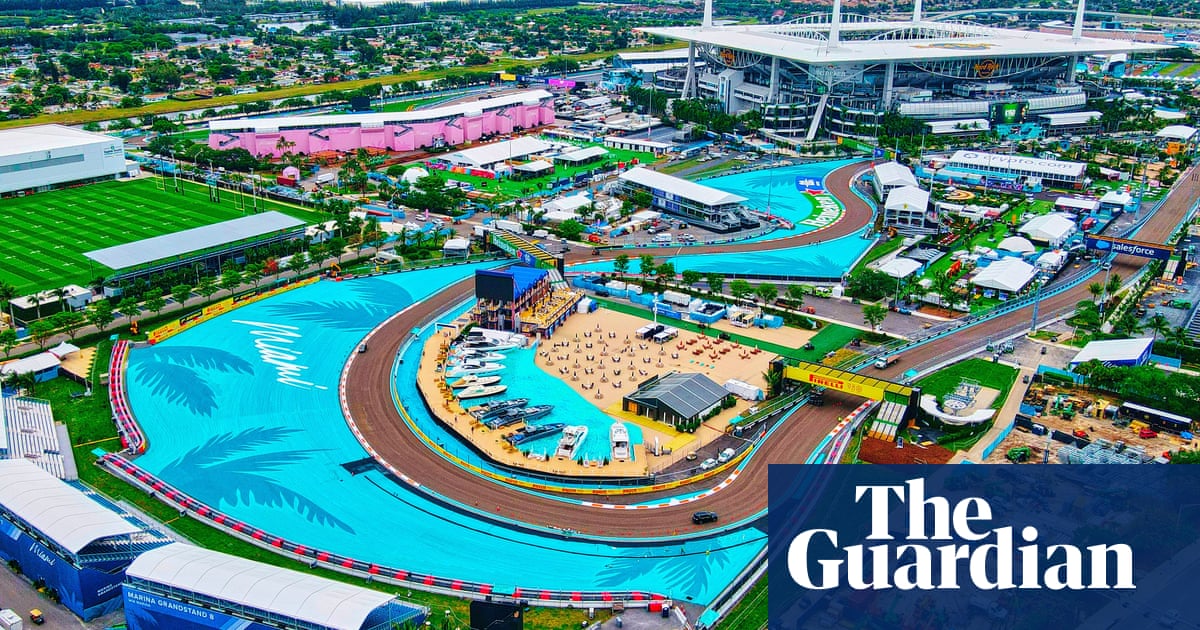With a sellout once more expected, this weekend’s Miami Grand Prix is building on an appeal to a younger, diverse audience that is a key part of Formula One’s burgeoning success in the US. Making its mark on the calendar with a grand, spectacular party in the Florida sunshine since theinaugural race in 2022, Miami is considered something of a showcase.
The opening blast of the three meetings now held in the US is a shop window for the sport with three teams, Racing Bulls, Sauber and Ferrari boasting special liveries for the event this weekend. The flamingo pink of the RB is very much making a splash but the clunky corporate blue addition to the Scuderia’s scarlet has fallen very flat with fans.
Naysayers may have disliked Miami’s emphasis on being a show, of presenting a weekend of entertainment where the food and beverages (or F&B as it is bafflingly, for the uninitiated, referred to here) were as fundamental as the racing. Where the atmosphere went hand in hand with the competition. It was perhaps the first of the “event” races F1 wanted to promote and like it or not, it has succeeded with numbers around this race telling their own story.
The atmosphere in the general admission – campus – area of the increasingly popular and affordable tickets away from the high-end hospitality which dominates all the media, is one of unadulterated enjoyment, shot through with the glorious absence of world-weary cynicism. There is an air of, whisper it, hedonism; not all racing must be accompanied by sombre beard-scratching from a grassy bank in the rain.
This atmosphere is not least informed by the makeup of the audience. From information from sales, admittedly with the caveat that the data refers only to the purchaser rather than all the ticket holders, Miami is reaching demographics every sport eyes with lustful ambition.
“We’ve got the high-end luxury buyer that we’ve really cultivated a relationship with and built their trust,” says Tyler Epp, the Miami GP president. “But at the same time, we’ve got some of our entry level motorsport fan data that’s telling us we’re also a motorsport event for the people who are intrigued and interested and just want to come and see the cars for the first time.”
It is these new fans that have led a push for the new single-day tickets and the three-day campus tickets. It is also, most significantly, a young audience.
“The base is growing most aggressively from what we’ve seen in the 20 and 30-year-old buyer,” Epp adds. “Our data does not tell us that this is an audience of 30 to 60-year-old white men, that’s not what we’re seeing now.
“Certainly they’re here but it’s a much more eclectic diverse group than that and part of that’s partially because we’re in Miami, which is such a wonderfully diverse market.”
Their data is corroborated trackside in both age and ethnic diversity, while the gender differential is also notable, with the race easing toward what might be a 50-50 split in forthcoming years.
Sign up toThe Recap
The best of our sports journalism from the past seven days and a heads-up on the weekend’s action
after newsletter promotion
“We’re tracking about 40% female to 60% male right now,” he says. “That’s on the buyer data and I can also say that the female audience is certainly younger than the male audience. It skews younger.”
These are the demographics the sport needs to build on the success it has enjoyed in the US with Drive to Survive and, for all that the sound and fury of Las Vegas might have appeared to have outshone Miami of late, it is undeniable that the race at the Hard Rock Stadium is pulling in the numbers.
Last year when McLaren’sLando Norris won his first F1 racehere it drew record viewing figures for the US of 3.1 million and Miami now holds the top three live US TV audiences in F1 history. While the season as a whole was pulling in an average of 1.11 million per race. Which, while still small in comparison to NFL and NBA, are considered strong numbers as the sport builds its presence.
Epp is in good position to judge how the sport fares in comparative terms. He has worked both trackside and team side in Nascar, IndyCar and sports cars before moving into baseball for four and a half years and then putting in almost nine years with the Kansas City Chiefs in the NFL; he is convinced the future remains bright.
“We can be very bullish aboutFormula Onein the United States,” he said. “I view it as solidified, here to stay and looking at continuous growth, not necessarily ebbs and flows. I think the United States sports ecosystem in general ebbs and flows a bit with competitiveness and competition in particular markets but as a whole we feel really, really good about the state of Formula One.”
